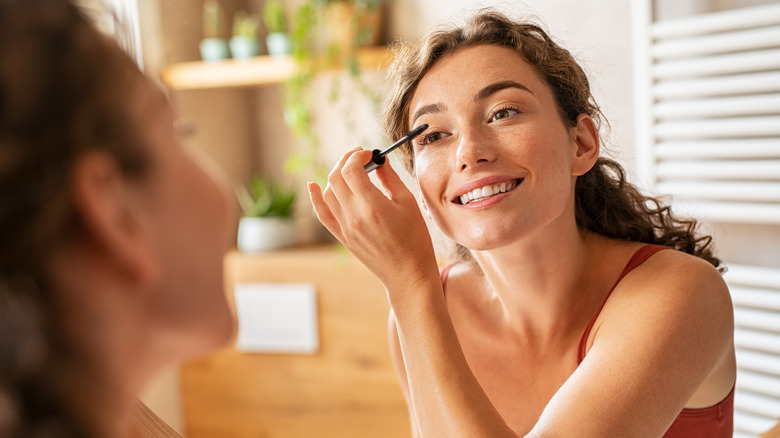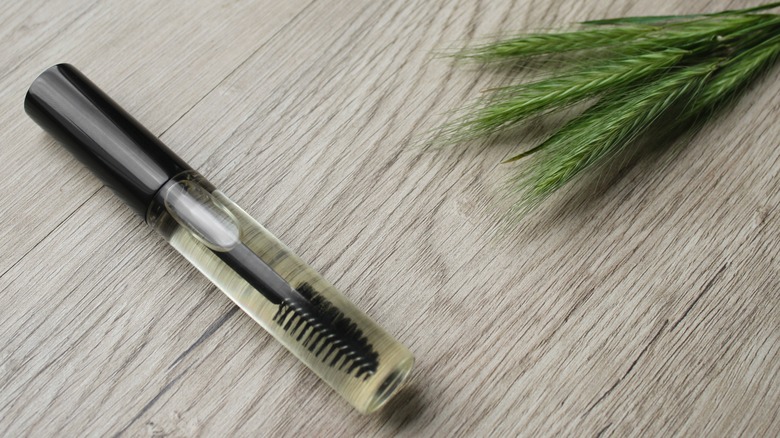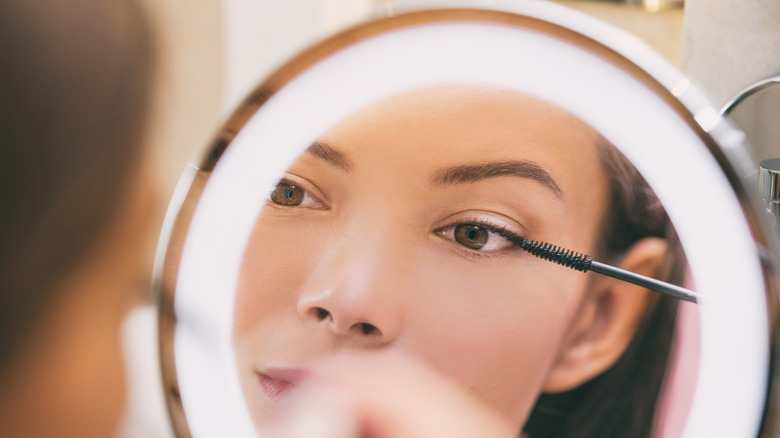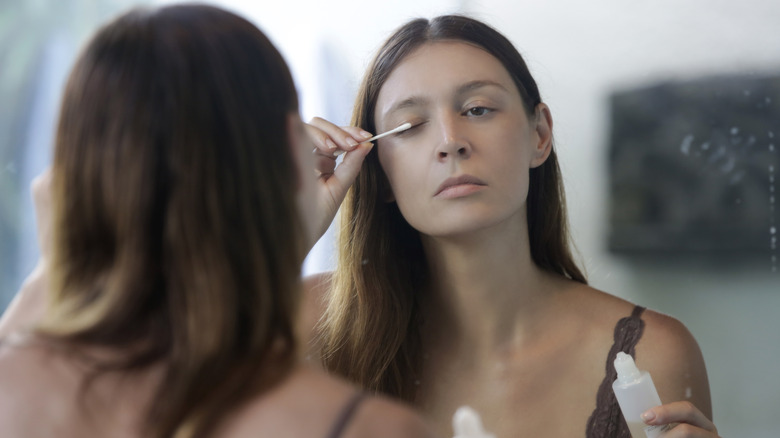Lash Growth Serum Devotees Are Quitting The Product - Here's Why
Having longer, thicker eyelashes is something that many people would love to obtain, but the lash growth serums on the market may not be as effective or even safe as you might think. Some lash growth serum devotees are even quitting the products because they aren't necessarily very healthy for your lashes, eyes, or body. As it turns out, eyelash growth serums may be right for some people but not for others, and knowing the reasons why can help you decide if you should continue using the lash growth serum you apply on a daily basis.
In particular, many common lash serums contain ingredients that aren't the safest to apply to the delicate area around your eye. A 2016 study published in the journal Ophthalmic Genetics determined that commonly co-opted medicinal ingredients used in lash serums and other beauty products can lower intraocular pressure within the eyes, among other side effects that aren't openly disclosed.
Like all beauty products and cosmetics, the lash serums you apply to your eyelashes are absorbed into your body and can have detrimental effects. Protecting your eyesight is imperative, as is taking care of the sensitive skin around your eyes. This is why it's important to know the ingredients that make up your lash serum and to understand how they can affect you before you decide whether to keep using them or join the people ditching their lash serums altogether.
The ingredients may have unwanted side effects
The world of cosmetics can feature ingredients with names that you can barely pronounce, let alone recognize as being safe or potentially harmful to your body. A primary ingredient in many lash serums that has caused devotees to turn away from the product are prostaglandin analogs, which have traditionally been used in prescription products, but versions of the ingredient have made their way into over-the-counter serums.
A 2011 medical study published in the journal Aesthetic Plastic Surgery found that the prostaglandin analogs in prescription medications for glaucoma are indeed effective in lengthening and darkening eyelashes, as are OTC products containing the active ingredient. Alongside the benefits of prostaglandin analogs, though, researchers determined a risk of bacterial infection from the use of cosmetics around the eye area.
Additionally, according to WebMD, there are some common side effects of using lash serums involving prostaglandin analogs that you should keep an eye out for. These include eyes that become excessively dry, itchy, or red, eyelids that become swollen or noticeably aggravated, and any additional signs of an allergic reaction to the product in the areas in or around the eyes. The skin on the eyelids may also become darker or appear to have abnormally pigmented spots, with permanent damage potentially arising in dark pigment on the eye's iris. The moment you notice even the slightest sign of an unusual reaction to a lash serum, you should speak with your healthcare provider.
You may not know what you're putting on your sensitive eye area
When the first FDA-approved drug with prostaglandin analogs — Latisse — was found to effectively increase the fullness and length of eyelashes, the cosmetics industry quickly caught on and began creating products utilizing the ingredient, per the American Academy of Ophthalmology. The primary concern with the availability of these cosmetics is the access to products made with prostaglandin analogs without the education provided by a prescribing physician. When giving a prescription for a medication with prostaglandin analogs, a healthcare provider informs the patient about the potential side effects and risks of using that product. But when a person buys a lash serum off the shelf, there is no one present to explain the potential drawbacks.
Even more dangerous is that prostaglandin analogs used in cosmetic products are often written as isopropyl cloprostenate on the ingredients list rather than explicitly stating that prostaglandin analogs are used in the item. Unless you're fully knowledgeable about these active ingredients, you're unlikely to realize that the cosmetics you're applying to your eye area pose potential harm.
Furthermore, it's vital to note that most cosmetics are not FDA-approved. Given the lack of oversight as to what goes into cosmetic products, there is no regulation as to the amount of prostaglandin analogs that are used in lash serums. If you're concerned about knowing everything about what you put near your eyes — including potential risks — you may want to give most lash serums a miss.
Finding a safe lash serum if you just can't quit
If luscious lashes are still your goal, it's possible to find cosmetics and beauty products made with safe ingredients; there are lash serums that don't include prostaglandin analogs. Divine Lashes suggests looking for lash serums that use peptides to enhance the fullness and length of eyelashes with a lower risk of unpleasant side effects. If you want a lash serum free from prostaglandin analogs, avoid products with synthetic prostaglandin ingredients like isopropyl cloprostenate, dechloro dihydroxy difluoro ethylcloprostenolamide, isopropyl phenyl hydroxypentane, and dihydroxy cyclopentyl heptane.
A 2020 study published in Optometry Times Journal identified eyelash appearance as being a traditional beauty marker but expressed advocacy for the use of prostaglandin-free serums when trying to enhance eyelashes. Researchers found synthetic prostaglandins in over-the-counter cosmetics to frequently include "prost" on their packaging to indicate the presence of the active ingredient, so that's an easy, though not universal, marker to avoid.
But keep in mind that loose regulation over what ingredients are added to cosmetic products means there is also the possibility of ingredients being left off of the ingredients list on a product label — unfortunately, a common practice among cosmetic manufacturers. Check the listed ingredients on a product, but also do your research on the company, manufacturer, and amount of transparency before applying any new product to your eye area.



